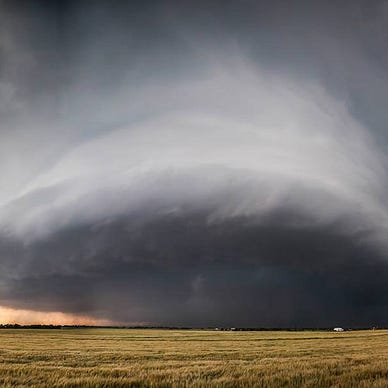Remembering The Eruption Of Mount Tambora (1815)
The eruption of Mount Tambora was rated 7 on the Volcanic Explosivity Index (VEI), a scale from 0 to 8.
In April 1815, our modern world faced one of the most devastating natural disasters in its history:
The eruption of Mount Tambora, on the island of Sumbawa, Indonesia.
The Volcano Cycle Described
Around 160 cubic kilometers of material were ejected by the eruption.
First, subduction occurs creating intense pressure and heat. (i.e., Subduction is the process in which one tectonic plate moves beneath another plate at a convergent boundary)
2. The temperature rises with the depth (≃30°C/km), causing the partial melting of rocks. (i.e. some minerals melt under the effect of heat, but the entire rock does not liquefy completely; at most 50% of the rock liquefies)
The molten rock resulting from it is called magma. As magma is less dense than surrounding rocks, it ascends towards the surface, seeking pathways such as fractures and fissures in the Earth’s crust.
When hard rocks or sealed fissures obstruct the magma’s path, it accumulates in what is known as a magma chamber (i.e. a magma reservoir).
As magma continues to accumulate in the chamber, the pressure within increases. Eventually, the rocks above the chamber fracture, allowing the highly pressurized magma to erupt to the surface forcefully.
During eruptions, magma, now called lava, cools and forms volcanic rocks that shape the cones of volcanoes.
This description is taken from my article on volcanoes if you want to know more about them:
April 10th, 1815
The volcano expelled ash, rock and gas at heights estimated at over 40 kilometers into the atmosphere.
Volcanic activity had begun to intensify in early April 1815, with precursor signs such as earthquakes and minor eruptions.
On April 10, massive explosions were heard hundreds of kilometers away.
Pyroclastic flows poured down the volcano’s flanks, destroying everything in their path.
These flows, composed of hot gases, ashes, and rocks, were so swift and hot that they incinerated everything they touched.
The eruption injected massive ashes and particles into the stratosphere, darkening the sky over a large part of the region.
Villages near Mount Tambora were completely destroyed.
It’s estimated that the eruption directly caused the death of nearly 10,000 people, but the total toll of the eruption would be even greater.
The “Year Without Summer”
Estimates of total deaths from starvation and disease caused by the eruption range from 50,000 to 92,000 people.
As stated, when Tambora erupted, it released enormous amounts of ashes and sulfuric gas into the atmosphere.
The ejected particles and gases formed a “veil” in the sky that blocked a portion of solar radiation, leading to a drop in temperatures.
The year 1816 became known as the “Year Without a Summer” due to generally lower temperatures.
These lower temperatures had dramatic repercussions on the growing seasons of crops in the Northern Hemisphere.
Summers were unusually cold, and weather conditions were extreme, with frosts and unusual summer snowfall.
These climatic conditions resulted in widespread crop failures in Europe, North America, and elsewhere, causing severe food shortages.
Thousands of people died from hunger and diseases related to malnutrition.
And Today?
The altitude of Mount Tambora was 4300 metres before the eruption, and is now 2850 metres.
While Mount Tambora has remained relatively quiet since its major eruption in 1815, it’s still considered active.
There have been some minor eruptions after 1815, and the volcano continues to show signs of activity, such as fumaroles and minor earthquakes.
Indonesian authorities and scientists closely monitor the volcano for any signs of a potential eruption.
The 1815 eruption created a massive caldera, a large crater formed by the collapse of the volcano’s summit.
Mount Tambora has become a destination for adventure tourism. Hikers can visit the caldera and explore the landscape around the volcano.
However, tourist activities are regulated and depend on the volcano’s activity status.
Some Associations You Can Help
Thank you for taking the time to read my work! See you in another story.
The links above are not affiliated.
Check if there is any discount left on Medium Membership now! ⬅️
Articles related to the topic:
🔽 If you enjoyed this article, feel free to check out the list below. 🔽



